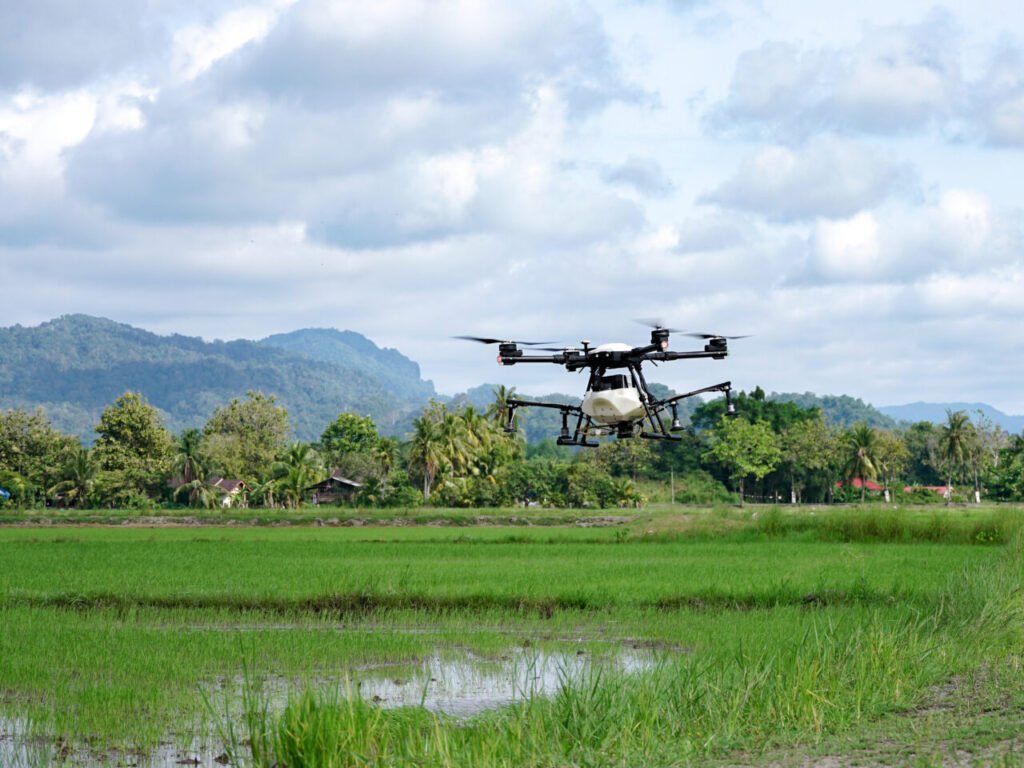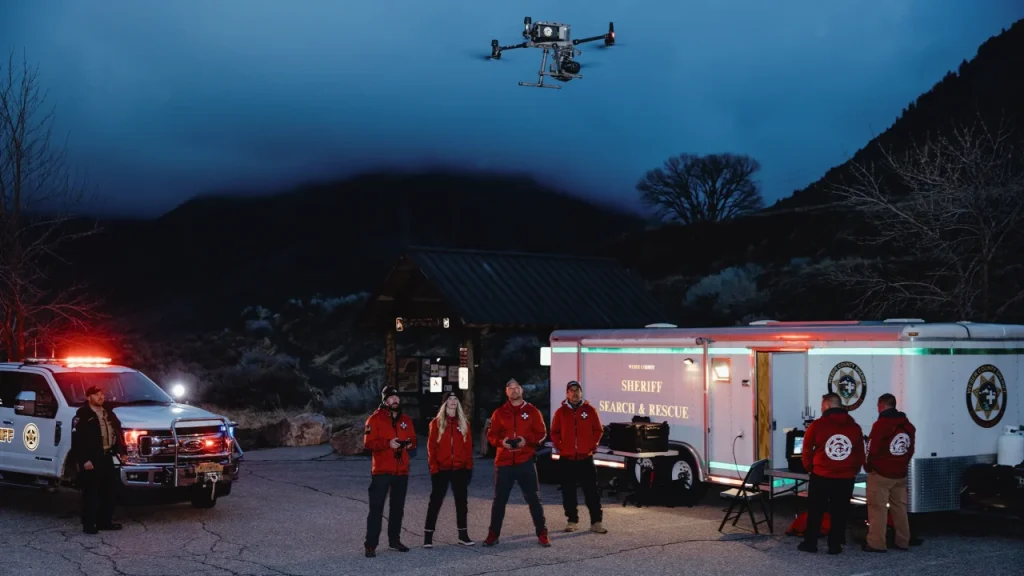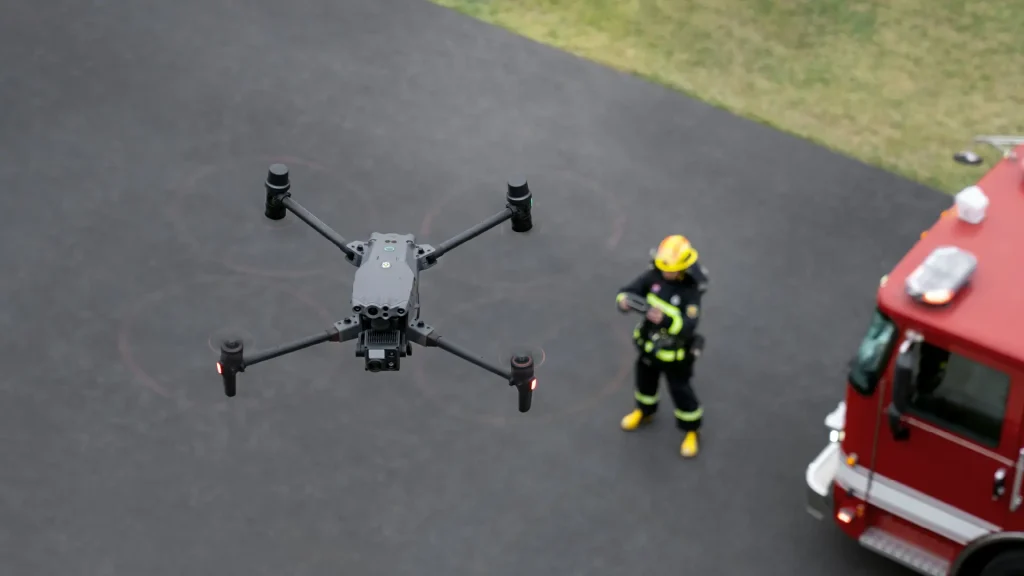Introduction
Unmanned aerial vehicles (UAVs), sometimes known as drones, were originally created for military use, but they are now widely used in a variety of businesses. Agriculture is now the second most drone-adopted industry after construction, with a market for agricultural drones worth $1,3 billion.
Agricultural drones appear to have a bright future: according to estimates, the industry is expected to reach $5.7 billion by 2026, growing at a rate of 25% CARG. As drone prices fall and agricultural drones software becomes more complex, demand is only expected to increase.

Why Agricultural Drones?
How can drones be used in agriculture? Increasing overall efficiency is the short answer to this question, but drones can be used for more than that. As drones become a crucial component of smart (or “precision”) farming, they assist farmers in overcoming a variety of obstacles and gaining a wealth of advantages.
The majority of these advantages result from removing all speculation and decreasing ambiguity. The success of farming typically depends on a wide range of variables, including weather and soil conditions, temperature, precipitation, etc., that farmers have little or no influence over. The secret to efficiency is in their capacity to adapt, which is greatly influenced by the availability of precise information that is available almost instantly.
Here is where using drone technology can really shift the game. Farmers may boost crop yields, save time, save costs, and act with unparalleled accuracy and precision by obtaining access to a massive pool of data.
The world as we know it today moves quickly; adjustments and changes take place in what feels like a moment. Farmers will need to use newer technologies to solve new difficulties since adaptation is essential given the expanding population and the changing climate throughout the world.
7 Benefits of Drones in Agriculture
Monitoring Plant Health
Plant health monitoring is one of the applications for drone imaging that has already been successfully implemented. Using granular colour data, drones with specialised imaging hardware called the Normalized Difference Vegetation Index (NDVI) can assess the health of plants. This enables farmers to keep an eye on crops as they develop and address any issues as soon as they arise to save the plants. This graphic demonstrates the NDVI process clearly.
Crop health is also observed by drones equipped with ‘regular’ cameras. To monitor crop growth, density, and coloration, many farmers currently utilize satellite images. However, accessing satellite data is expensive and frequently less efficient than closer drone surveillance. Cloud cover and bad lighting conditions are less important with drones than with satellite photography because they fly near to fields. While satellite imaging may provide accuracy down to the meter, agricultural drones imaging can produce millimeter-level accuracy in image location. This implies that regions with stand gaps can be identified and replanted as necessary after planting, and disease or pest issues can be quickly identified and dealt with.

Monitoring Field Conditions
The condition of the field and the health of the soil are both being monitored via drone field monitoring. Agricultural drones can accurately map the field, providing elevation data that enables producers to identify any field abnormalities. The ability to determine drainage patterns and wet/dry patches, which enable more effective watering practices, is facilitated by knowledge of field elevation. Utilizing improved sensors, several sellers and service providers of agricultural drones also provide soil nitrogen level monitoring services. This makes it possible to apply fertilizers precisely, removing troublesome growth areas and enhancing soil health for years to come.
Planting & Seeding
Seed planting is one of the more recent and less popular uses of drones in agriculture. Currently, automated drone seeders are largely utilised in the forestry sector, but a more broad application may be on the future. Drone planting makes it possible to replant inaccessible locations without putting workers in danger. With a crew of two operators and 10 drones that can plant 400,000 trees each day, they are also able to plant considerably more effectively.
Spray Application
In south-east Asia, the use of drones to apply spray treatments is already widespread; South Korea uses drones for over 30% of their agricultural spraying. Drone sprayers can manoeuvre across highly challenging terrain, such as steep tea estates at great altitudes. Drone sprayers spare workers from carrying backpack sprayers through fields, which can be harmful to their health. In order to maximise productivity and reduce chemical costs, drone sprayers offer very tiny spray treatments that can be targeted to specific locations. Currently, laws governing drone sprayers vary greatly from nation to nation.
Security
Drone security is a rapidly expanding industry apart from agriculture, but it is also very helpful for managing farms. Drones can monitor remote sections of a farm without having to travel there, saving time and enabling more regular monitoring of difficult-to-reach areas. Drone cameras can provide a day-long overview of agricultural activities to make sure everything is going properly and to identify where equipment is being used. Instead than adding more security staff, security drones can be used to monitor the fencing and boundaries around more important crops, including cannabis. Using drone cameras to find lost or hurt herd animals in distant grazing regions is another fascinating way that drones are being utilised to protect agricultural animals. It now just takes a few minutes to monitor remote places, as opposed to the hours-long walks that were once required.
Drone Pollination
Some of the most recent drone applications in farming are still in the testing and research stages. Drone technology for pollination is one of its most well publicized (and frequently fictionalized) applications. Small drones that can pollinate plants without harm are being developed by researchers in the Netherlands and Japan. The following phase is to develop autonomous pollinating drones that can operate and check on the health of crops without constant guidance from operators.
Drone AI
Machine learning is also used in the creation of another drone technology. Drones’ Artificial Intelligence (AI) must be improved in order to be more useful to small farmers in developing countries. Modern drone technology is better suited for keeping an eye on well-known crops like maize that are grown in extensive monoculture fields. As they stand, drone monitoring programs struggle to identify regions with a greater variety of crops, lesser-known food, and grains that seem alike at all stages of growth, making them less useful at tracking agricultural growth and health. To be able to teach AI systems to recognize fewer common crops and more varied planting patterns, further work must be done.
Conclusion
The use of drones has already significantly changed the agricultural sector and will increase over the next few years. Even if drone use is growing more beneficial for small farmers, there is still a long way to go before they are a standard piece of farming equipment, especially in developing countries. In many nations, laws governing drone use need to be created or changed, and more study is needed to determine how successful they are at carrying out certain activities like applying and spraying pesticides. Drones can be valuable to farmers in a variety of ways, but before purchasing pricey equipment, it is crucial to understand their capabilities and limitations.
For more information, contact us and we are happy to help you!
Reference
WHY USE AGRICULTURE DRONES? MAIN BENEFITS AND BEST PRACTICES




